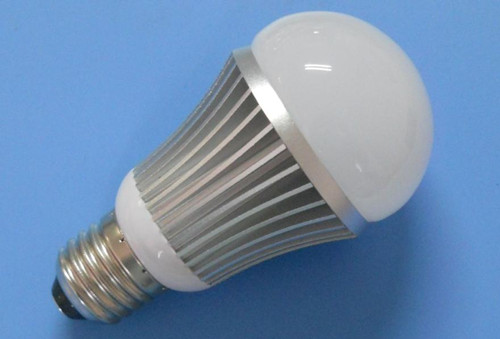
12 unique advantages of LED lighting In 1923, the scientist Rosoff (O. W. Lossew) discovered that the PN junction of silicon carbide has unidirectional conductivity and luminescence; around 1955, R. J. Haynes presented a study on the PN junction of semiconductor germanium, G. A. Wolff studied the luminescence phenomenon of phosphonium phosphide; in 1968, Monsanto and HP produced the red LED for the first time, making LED officially become an electronic product to enter the market.
(I) Energy Conservation: The spectrum of LED is almost all concentrated in the visible light band, and its luminous efficiency can reach 80-90%. I also compared the LED with ordinary incandescent lamps, spiral energy-saving lamps and T5 trichromatic fluorescent lamps. The results showed that: ordinary incandescent lamps have a luminous efficiency of 12 lm/w, a life of less than 2000 hours, and an energy efficiency of 60 lm for spiral energy-saving lamps. /w, life is less than 8000 hours, T5 fluorescent lamp is 96Alm/w, life is about 10000 hours, and 5mm diameter white LED is 20-28lm/w, life can be greater than 100,000 hours. Some people also predict that the future limit of LED life will be infinite.
Most people think that energy-saving lamps can save 4/5 energy is a great innovation, but LED energy-saving lamps than energy-saving 1/4, which is a solid light source greater reform. In addition, LED also has other advantages, high quality light, basically no radiation, is a typical green lighting source; reliable and durable, very low maintenance costs and so on. Because LED has the characteristic that above other solid light source can't match, LED will be the mainstream light source of lighting industry after 10 years.
(2) Safety and environmental protection: The operating voltage of the LED is low, mostly 1.4 to 3V; the working current of the ordinary LED is only 10mA, and the ultra-high brightness is only 1A. LED does not need to add “mercury†in the production process, does not need to inflate, does not need the glass outer covering, the impact resistance is good, the earthquake resistance is good, is not easy to break, is convenient to transport, very environmental protection, is called “green energyâ€.
(3) Long service life: The LED is small in size and light in weight, and the outer casing is encapsulated with epoxy resin, which not only can protect the internal chips, but also has the ability to transmit light and collect light. The service life of LEDs is generally between 50,000 and 100,000 hours. Because LEDs are semiconductor devices, even frequent switching will not affect the service life. At present, household lighting mainly uses incandescent lamps, fluorescent lamps and energy-saving fluorescent lamps.
(4) Fast response: The response frequency fτ of the LED is related to the lifetime τmc of injecting minority carriers. For example, LEDs made of GaAs materials have a τmc in the range of 1 to 10 ns, and the response frequency is about 16 to 160 MHz. This high response frequency is sufficient for displaying a 6.5-MHz video signal, which is one of the key factors for implementing a large-screen video LED.
At present, the LED has the lowest response time of 1 microsecond, and is generally a few milliseconds, which is about 1/100 of that of an ordinary light source. Therefore, it can be used in many high-frequency environments, such as car brake lights or status lights, which can shorten the braking time of the vehicle behind the vehicle, thereby improving the safety.
Page 2: The strong advantages of LED light source (5) High luminous efficiency: The luminous efficiency of incandescent lamps and halogen lamps is 12-24lm/w (lumens/watt), the luminous efficiency of fluorescent lamps is 50-70lm/w, and the light of sodium lamps The effect is 90-140lm/w, and most of the power consumption becomes heat loss. The LED light efficiency can be improved to 50-200lm/w, and the light monochromaticity is good, the spectrum is narrow, and colored visible light can be directly emitted without filtering.
(6) Small size of LED components: It is more convenient for the arrangement and design of various devices, and it can better achieve the effect of “seeing only the light but no light source†in the night scene lighting.
(7) High concentration of LED light energy: Concentrated in a small wavelength window, high purity.
(8) The LED has strong directionality: the luminance attenuation is much lower than the conventional light source.
(9) The LED can be driven by low voltage and direct current: It has the advantages of small load and weak interference, and has lower requirements for the use environment.
(10) It is possible to better control the composition of the luminescent spectrum: this can be used well for the local or key lighting in museums and exhibition halls.
(11) It is possible to control the size of the semiconductor light emitting layer and the semiconductor material to prohibit the amplitude of the striation: thereby emitting light of various colors and having a higher chroma.
(12) High color rendering: No harm to human eyes.
Written at the end: As an emerging technology field, the semiconductor lighting industry is still in a stage of rapid development. We are delighted with the advancement of science and technology, but we also need to realize that both technical and industrial regulations are compared with traditional light sources. , are not yet mature. There is still a long way to go before replacing the traditional light sources with LED. It is believed that by promoting the healthy and orderly development of the entire industry, accelerating the pace of application, gradually transforming traditional industries, and advancing the adjustment of the industrial structure, it is bound to open for people. Energy-saving green quality of life.
Lipo Battery Cell,Lipo Battery Voltage,New Design Lipo Battery,Lithium Polymer Cell
Shenzhen Powercom Electronics Co., Ltd. , https://www.expowercome.com